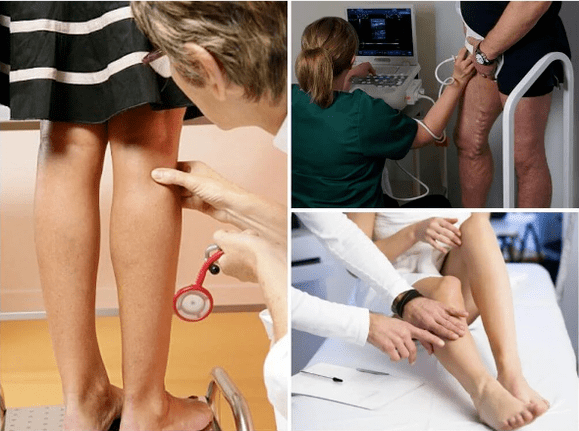
If by the end of the work day you regularly start hurting and swelling your feet and vessels in the form of blue-violet "stars" are visible on your skin, you probably have the initial stage Different veinsSIn this case, do not be scared and also delay the visit to the phlebologist.First, according to statistics, by the age of 20, about 17% of Russia's population suffers from venous insufficiency (ie they have the first prerequisites for the development of varicose veins) and this disease is much more common than the stronger sex.And second, modern medicine has quite successfully learned to deal with Different veinsAnd therefore, the earlier you consult a doctor, the more you have a chance to avoid surgery and to bypass only therapeutic methods of treatment (medicine, ointment, wearing special elastic underwear).
What is the cause of varicose veins, is it possible to avoid and what treatment methods exist?
So, Different veins - a condition in which the peripheral veins (usually on the surface of the legs under the skin) are inflated and wound, taking the form of swollen bluish grams.Most often, varicose veins, accompanied by valve insufficiency and impaired blood flow, which in turn in the most advanced cases leads to the appearance of thromboembolism and thrombophlebitis (inflammation of the vein wall and clogging with a thrombus).
According to scientists, the provocative factors for the appearance of varicose veins may be: heredity (if one of the relatives has had a disease in the family), a sharp increase in body weight, work associated with heavy physical activity.In women, hormonal changes (for example in adolescence) pregnancy and related loads on the body can become the causes of varicose disease.The venous system becomes especially defenseless under the influence of physical and hormonal changes.The greater it is, the greater the likelihood of a disturbance of blood flow from the legs and the development of venous insufficiency.
Despite the high level of science and medicine development, there are only three methods for treating varicose veins.
Medication
The patient is prescribed a course of medicines (only your doctor may prescribe it, it is not recommended to do this yourself).Before use, carefully read the instructions for use to be prepared for the side effects of the medicine (such as drowsiness or dizziness), and also check that you have allergies to the chemicals that compensate for it.The drug method is only used in the early stages of varicose veins.
Sclerotherapy
The method of the method: a special medicine is introduced into the inflamed vein with a syringe and a needle, which leads to the formation of a thrombus, which in turn clogs Vienna.The blood flow to it stops and the stagnation disappears.The sclerotherapy procedure is almost painless and only takes 5-10 minutes.But with all the positive aspects of this method (namely the ability to do without surgery and related consequences), sclerotherapy also has disadvantages: unfortunately, the focus of inflammation can occur when the drug enters the skin) and this method of treatment is usually opposite to patients with increased allergic reaction.
Surgical removal of varicose veins
It is prescribed in the most final cases where other treatments are not appropriate or the disease is too neglected.Operation is performed during which the inflamed vein is removed by a small incision on the skin.Before surgery, you will need to undergo ultrasound duplex or triplex scanning to identify the condition of the venous system as a whole and more specially managed zone.
Like sclerotherapy, the surgical method allows you to transfer the load on the leakage of venous blood from superficial veins to deep, until the surgery eliminates the cause of the disease, but only eliminates the consequences of it.Therefore, if a person does not follow the recommendations of a phlebologist after surgery, relapses are possible.
Each of the treatment methods under consideration has serious contraindications, so the doctor should decide which option is right for you.In order to be fully confident in the correctness of the diagnosis and the prescribed treatment, it is better to undergo a study by several specialists at a time.It is worth forgetting that it is always easier to prevent the disease than to be treated, therefore, if you do not want to suffer with diseased veins, follow the simplest recommendations and then no varicose veins are terrible.
- If you think your feet are tired when you get home, sit in a comfortable chair and place your feet next to the chair so that they are above the pelvis and the blood leaves them.
- Do not take too hot bath - the dishes are expanded from this.
- Wearing shoes with too high heels (over 8-10 cm) also does not take advantage.
- Follow the weight.
- You lead an active lifestyle, in moderate amounts of sports (such as swimming, horseback riding, cycling).























